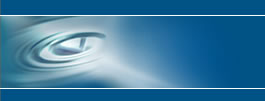|
eShepherd is wireless information-delivery solution for healthcare.
It combines a secure broadband network with a family of RFID devices
(such as patient bracelets, staff badges and asset tags) to provide
patient identification, patient, staff and asset location, and data-delivery
to wireless devices such as a doctor’s PDA or a nurse’s
tablet PC. Because information is available at the bedside, time,
costs and even lives are saved.
The wireless network and RFID devices are in real-time communication
with the Hospital Information System (HIS). This is possible through
the VeraFi – a wireless access reading point that unifies
the RFID and WiFi technologies. Through this communication, the
eShepherd network is constantly and automatically delivering information
such as patient identification and location to the other components
of the HIS.
Are there terms
that might help my understanding of RFID technology?
We have adopted the following
definitions to clarify some of the confusion:
Passive Tag - a passive
tag receives the energy it uses to transmit it's signal from a field
generated by an RFID reader. Without this field, the tag is
inactive. While it is possible for a passive tag to operate
up to distances of ~10 feet, it is more common for this tag to operate
with a range of inches. EPC Global also calls these tags Class
0, 1, & 2 tags (with each class representing a step in functionality).
Active Tag - an active tag receives the energy its uses to transmit
its signal from a battery or other direct power source. This
tag is always active as long as power is available. Active
tags are primarily used for distance applications and can have very
long ranges depending on the environment they are used in. This
is a Class 4 tag to EPC Global and can be combined with other functions
such as a sensor.
Hybrid or Battery-Assisted Tag - this tag uses both energy it receives
from the field generated by the reader as well as power from an
additional source to provide energy to it. The need for the additional
energy may be to enable information storage on the tag, transmit
more than just the tag ID, or to extend the distance that the tag
can interoperate with the reader. This is a class 3 tag to EPC Global.
Long Range RFID - this is the technology used to read and communicate
with tags that are a distance away from the reader. It is
typical that the user does not have control of the reader, but rather
it is fixed to the facility. With regard to frequency, long
range technologies are at least in the UHF band if not in the GHz
band. Locating or tracking people (both staff and patients)
and valuable and/or mobile equipment are good uses of this technology.
Proximity-Based RFID - this technology is used to sense tags that
are close to the reader and often the reader is in possession or
close control of the user. Often, because the reader is in
close proximity to the tag, a passive technology is used for the
tag. Some patient identification, supplies, medicines, smaller
instruments, lab specimens, and blood/plasma are all good uses of
this technology.
As a nurse approaches the bedside, the patient is automatically
identified and his or her records appear on the nurse’s tablet
PC screen. This feature is especially critical in the administration
of medications, as it has been identified that one in five medication
administrations have an error. While not all of these errors cause
injury, they all have significant associated costs and can lead
to serious harm or death of the patient. From the bedside the nurse
can access and update the patient’s records or consult reference
materials. He or she could also locate equipment, such as IV pumps,
or other staff members.
While bar code solutions are a vast improvement over the traditional
identification method of “eye-balling” a patient, they
still require many manual steps (e.g. scanning the patient’s
bracelet) that can often be bypassed. Studies on the use of bar
coding have shown that the technology has no impact on “wrong
patient” errors because of this bypassing. Because eShepherd’s
communication and exchange of data is automated, it eliminates steps
that distract the caregiver, are invasive to the patient, consume
valuable time, and often result in errors.
Because eShepherd facilitates the paperless hospital system and
has robust security features, it minimizes unauthorized or incidental
disclosure – perhaps the primary objective of HIPAA. One of
JCAHO’s most important mandates is the requirement of two
forms of patient identification at the time of medication administration.
In conjunction with the Hospital Information System, eShepherd can
automatically validate the patient ID providing both methods of
identification. Requirement achieved!
eShepherd is built on an extremely flexible platform, allowing it
to integrate with existing or legacy hardware as well as deliver
various software applications to the bedside. The system is designed
to provide your existing HIS system with additional information
that can increase the impact that your systems have on creating
workflow efficiencies. The most common communication method between
these HIS systems and eShepherd is XML.
Call us. We’re happy to answer any questions or show off the
eShepherd solution in person. Contact Brad Honeyman at 603.570.4000
x204 or sales@exavera.com, to learn how eShepherd can suit your
particular needs.
|



